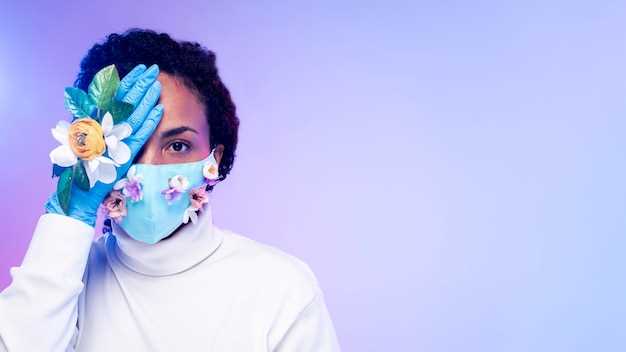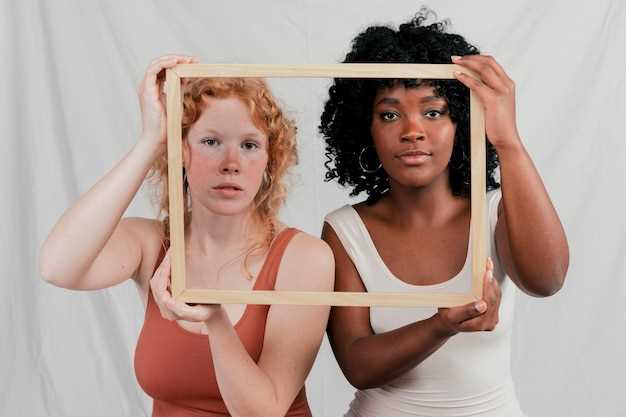
Art has always been a powerful medium for expressing ideas, emotions, and experiences. It has the ability to transcend boundaries and challenge societal norms, offering a unique lens through which we can view the world. In recent years, a new wave of artists has emerged, pushing the boundaries of traditional artistic conventions and exploring themes of gender, identity, and contemporary society.
By defying conventional norms and expectations, these artists are reshaping the art world and challenging our preconceived notions of what art can be. Through their work, they invite us to question the binary constructs that have long defined our understanding of gender and identity. They encourage us to embrace diversity, celebrate individuality, and challenge the status quo.
With their bold and thought-provoking creations, these artists are not only breaking down barriers but also sparking important conversations about the fluidity of gender and the complexity of identity. They are using their art as a platform to challenge stereotypes, dismantle oppressive systems, and advocate for inclusivity and acceptance.
Through a variety of mediums such as painting, sculpture, performance art, and multimedia installations, these artists are exploring the nuances of gender and identity in a rapidly changing world. They are creating spaces where individuals can express themselves authentically, free from the constraints of societal expectations. Their work invites us to question our own assumptions and biases, encouraging us to embrace the beauty and diversity of the human experience.
Challenging Traditional Gender Roles: Artists Redefining Identity
In this section, we explore the innovative ways in which artists are pushing the boundaries of traditional gender roles and redefining notions of identity. Through their creative expressions, these artists challenge societal norms and offer alternative perspectives on gender and selfhood.
1. Reimagining Masculinity: Some artists are dismantling the rigid expectations associated with masculinity, exploring the complexities and vulnerabilities that exist beyond traditional stereotypes. Through their work, they invite viewers to question preconceived notions of what it means to be a man.
- Artist A’s powerful photographs capture men in moments of emotional vulnerability, challenging the idea that masculinity is synonymous with stoicism.
- Artist B’s sculptures depict male figures in unconventional poses, highlighting the fluidity and diversity of masculine expression.
- Artist C’s performance art confronts toxic masculinity by subverting traditional symbols of power and dominance.
2. Redefining Femininity: Other artists are challenging traditional notions of femininity, celebrating the strength, agency, and individuality of women. Through their art, they empower women to embrace their authentic selves and reject societal expectations.
- Artist D’s vibrant paintings depict women in positions of power and authority, reclaiming female narratives from a male-dominated perspective.
- Artist E’s multimedia installations explore the intersectionality of gender and race, highlighting the unique experiences of women of color.
- Artist F’s provocative photography challenges beauty standards and celebrates the diversity of body types, promoting body positivity and self-acceptance.
3. Transcending Binary Constructs: Some artists are transcending the limitations of the gender binary, embracing fluidity and nonconformity. Their work challenges the notion that gender is fixed and encourages a more inclusive understanding of identity.
- Artist G’s mixed-media collages blur the lines between masculine and feminine, inviting viewers to question the rigidity of gender categories.
- Artist H’s performance art explores the concept of gender as a social construct, highlighting the fluidity and malleability of identity.
- Artist I’s interactive installations create spaces for self-exploration and expression, allowing individuals to navigate and redefine their own identities.
Through their artistic practices, these artists are reshaping our understanding of gender and identity, challenging traditional norms, and paving the way for a more inclusive and diverse society.
Exploring Fluidity: The Rise of Non-Binary Artists in Contemporary Art
In the realm of contemporary art, a new wave of artists is challenging traditional notions of identity and gender. This article delves into the emergence of non-binary artists and their significant contributions to the art world. By embracing fluidity and defying societal expectations, these artists are reshaping the landscape of contemporary art.
Embracing Fluidity
Non-binary artists navigate the complex terrain of gender identity, refusing to conform to the binary categorizations of male and female. They embrace fluidity, recognizing that gender is not fixed but rather exists on a spectrum. Through their art, these artists explore the multifaceted nature of identity, challenging the rigid boundaries that society often imposes.
By rejecting the limitations of traditional gender roles, non-binary artists create space for self-expression and authenticity. Their work reflects the diverse experiences and perspectives of individuals who do not fit neatly into societal norms. Through their art, they invite viewers to question preconceived notions and engage in a dialogue about the fluidity of identity.
Breaking Barriers
The rise of non-binary artists in contemporary art is breaking barriers and expanding the definition of what art can be. Their work encompasses a wide range of mediums, from painting and sculpture to performance and digital art. By pushing the boundaries of artistic expression, these artists challenge the status quo and encourage a more inclusive and diverse art world.
Non-binary artists also play a crucial role in amplifying marginalized voices and experiences. Through their art, they shed light on the intersectionality of identity, addressing issues of race, sexuality, and class. By centering their work on lived experiences, they provide a platform for underrepresented communities and challenge the dominant narratives within the art world.
In conclusion, the rise of non-binary artists in contemporary art signifies a shift towards inclusivity and acceptance. By exploring fluidity and defying societal expectations, these artists are reshaping the art world and challenging traditional notions of identity. Their work invites viewers to question and reimagine the possibilities of self-expression, paving the way for a more diverse and inclusive artistic landscape.
Breaking the Binary: How Artists are Subverting Gender Norms
In this section, we explore the ways in which artists are challenging and redefining traditional notions of gender, going beyond the limitations of societal expectations. Through their creative expressions, these artists are dismantling the binary understanding of gender and embracing a more fluid and inclusive understanding of identity.
Embracing Fluidity
Artists are actively embracing the fluidity of gender, rejecting the idea that it is fixed and binary. They explore the spectrum of gender identities, highlighting the complexity and diversity that exists beyond the traditional male-female dichotomy. Through their work, they challenge the notion that gender is solely determined by biological sex, emphasizing that it is a social construct that can be deconstructed and reconstructed.
Questioning Stereotypes

By questioning and subverting gender stereotypes, artists are challenging the rigid expectations placed upon individuals based on their assigned gender. They challenge the idea that certain behaviors, interests, or appearances are inherently masculine or feminine. Through their art, they encourage viewers to question and challenge these stereotypes, promoting a more inclusive and accepting society.
By pushing the boundaries of gender norms, these artists are not only creating thought-provoking and visually stunning works of art, but also contributing to a larger cultural conversation about identity and acceptance.
Through their artistic expressions, they inspire us to question and reimagine the ways in which we understand and define gender, ultimately paving the way for a more inclusive and diverse society.
Empowering Women: Feminist Art as a Tool for Social Change
In the realm of artistic expression, feminist art has emerged as a powerful force for challenging societal norms and advocating for gender equality. Through various mediums and techniques, feminist artists have been able to dismantle oppressive structures, amplify women’s voices, and ignite conversations about the role of women in society. This article explores the transformative power of feminist art and its ability to bring about social change.
Reclaiming Narratives and Challenging Stereotypes
Feminist art serves as a platform for women to reclaim their narratives and challenge the stereotypes that have long confined them. By depicting women in diverse roles and breaking away from traditional representations, feminist artists disrupt the male gaze and offer alternative perspectives. Through their artwork, they confront societal expectations, debunk myths, and celebrate the complexity and diversity of women’s experiences.
Addressing Social Issues and Advocating for Equality
Beyond challenging stereotypes, feminist art also addresses pressing social issues and advocates for gender equality. Artists use their creative expressions to shed light on topics such as reproductive rights, domestic violence, and workplace discrimination. By bringing these issues to the forefront, feminist art sparks conversations, raises awareness, and mobilizes communities to take action. It serves as a powerful tool for social change, pushing for a more inclusive and equitable society.
In conclusion, feminist art plays a crucial role in empowering women and driving social change. Through its ability to challenge stereotypes, reclaim narratives, and address social issues, it offers a platform for women’s voices to be heard and for gender equality to be championed. By embracing feminist art, we can actively contribute to dismantling oppressive structures and creating a more just and inclusive world.
Queer Art: Celebrating LGBTQ+ Identity in the Art World
In this section, we will explore the vibrant and diverse world of queer art, which celebrates and embraces LGBTQ+ identity. Through various artistic mediums, queer artists challenge societal norms, question traditional concepts of gender and sexuality, and create spaces for self-expression and empowerment.
Exploring LGBTQ+ Themes

Queer art encompasses a wide range of themes related to LGBTQ+ experiences, including but not limited to love, desire, identity, and activism. Artists use their work to explore the complexities of queer existence, shedding light on the unique struggles and triumphs faced by LGBTQ+ individuals.
Breaking Boundaries and Challenging Norms
Queer art often pushes boundaries and challenges societal norms, inviting viewers to question their own preconceived notions of gender and sexuality. Through their art, queer artists disrupt traditional binary constructs, offering alternative perspectives and narratives that celebrate diversity and inclusivity.
| Artist | Artwork |
|---|---|
| Keith Haring | “Untitled” (1982) |
| Nan Goldin | “The Ballad of Sexual Dependency” (1986) |
| Zanele Muholi | “Somnyama Ngonyama” (2017) |
These are just a few examples of queer artists who have made significant contributions to the art world, using their creativity to challenge societal norms and celebrate LGBTQ+ identity.
Queer art serves as a powerful tool for representation and visibility, providing a platform for marginalized voices to be heard and acknowledged. By celebrating LGBTQ+ identity, queer art fosters a sense of community and empowerment, inspiring individuals to embrace their true selves and promoting acceptance and understanding in society.
Intersectionality in Art: Examining the Overlapping Identities of Artists
Exploring the multifaceted nature of artists’ identities within the realm of art, this section delves into the concept of intersectionality. Intersectionality refers to the interconnectedness of various social categories, such as race, class, sexuality, and gender, and how they intersect to shape an individual’s experiences and perspectives. By examining the overlapping identities of artists, we gain a deeper understanding of the diverse narratives and perspectives that contribute to the rich tapestry of contemporary art.
Artists are not defined solely by their gender or identity, but rather by the complex interplay of various factors that shape their lived experiences. Intersectionality recognizes that these identities are not separate entities, but rather intersect and interact with one another, influencing an artist’s artistic expression and the themes they explore. By acknowledging and examining these overlapping identities, we can challenge traditional narratives and stereotypes, and create a more inclusive and nuanced understanding of art.
Through the lens of intersectionality, we can explore how artists navigate and negotiate their identities within the art world. Artists from marginalized communities often face unique challenges and barriers, and their art becomes a powerful tool for self-expression and resistance. By examining the intersectionality of artists, we can shed light on the ways in which their identities inform their artistic practice, and how they use their art to challenge societal norms and advocate for social change.
Furthermore, intersectionality allows us to recognize the diversity within art itself. Artists with intersecting identities bring forth a multiplicity of perspectives and experiences, enriching the art world with their unique voices. By embracing intersectionality, we can move beyond a singular narrative and celebrate the multitude of identities and stories that exist within the realm of art.
In conclusion, intersectionality in art offers a lens through which we can examine the overlapping identities of artists and gain a deeper understanding of the diverse narratives and perspectives that contribute to contemporary art. By recognizing the interconnectedness of various social categories, we can challenge stereotypes, advocate for inclusivity, and celebrate the multiplicity of identities within the art world.


